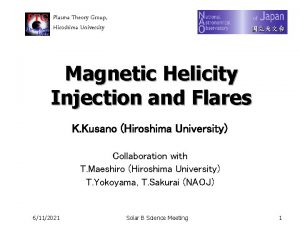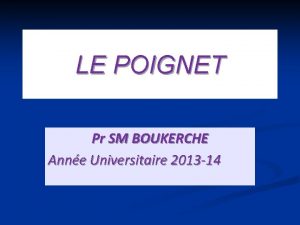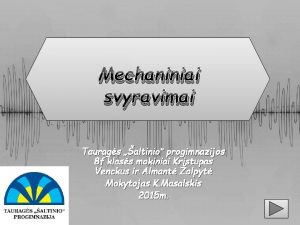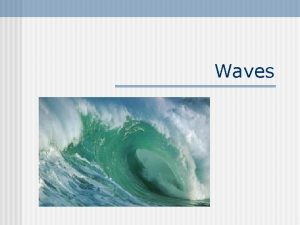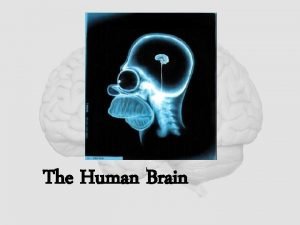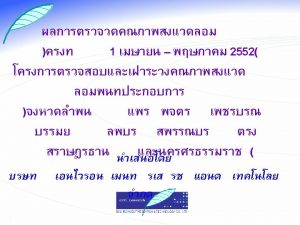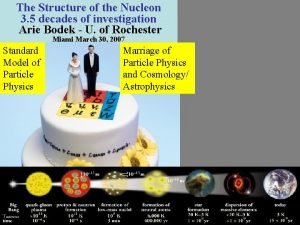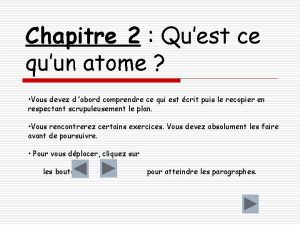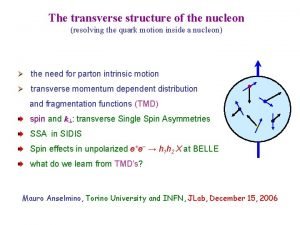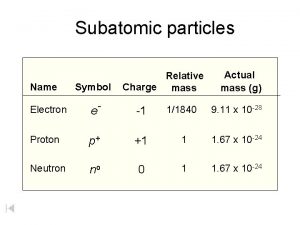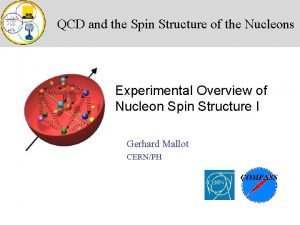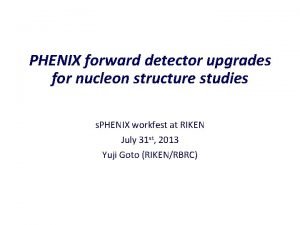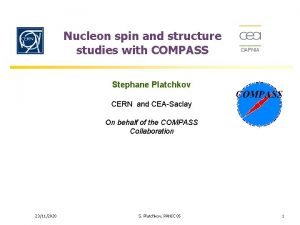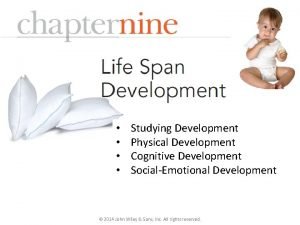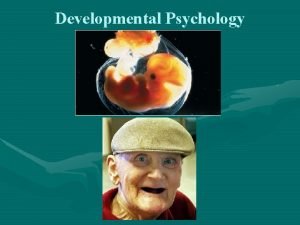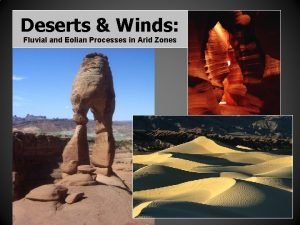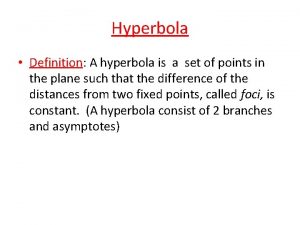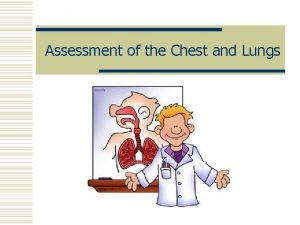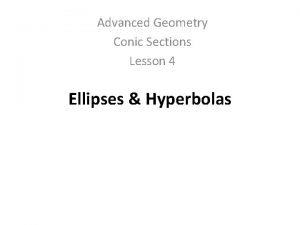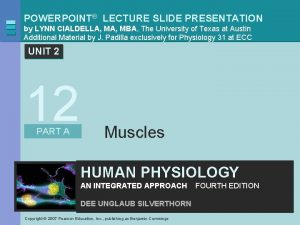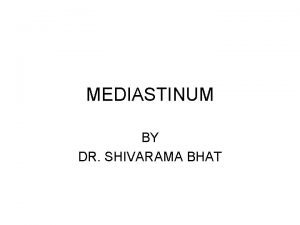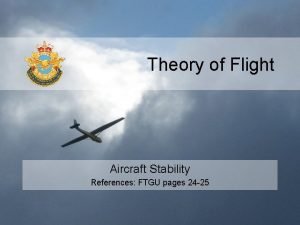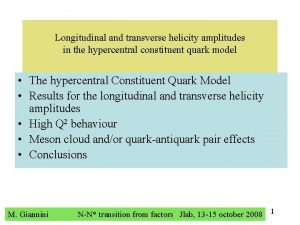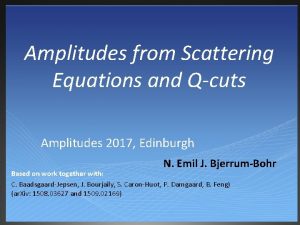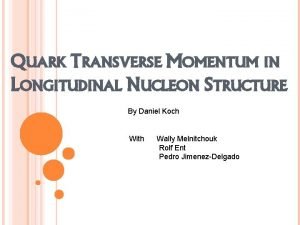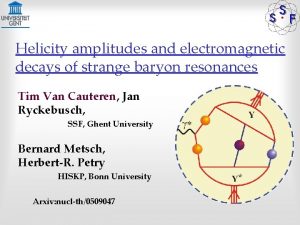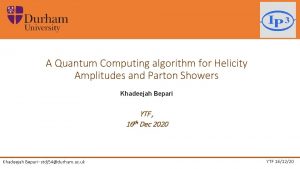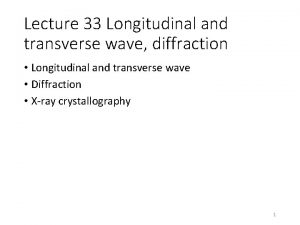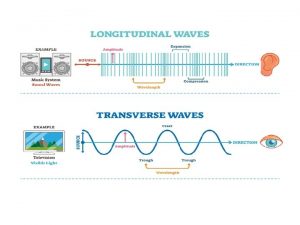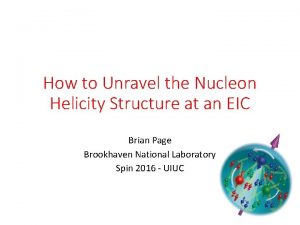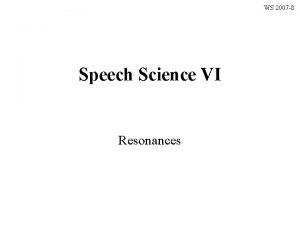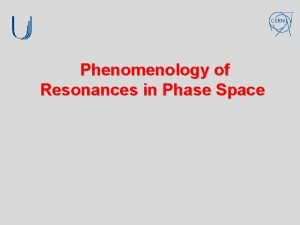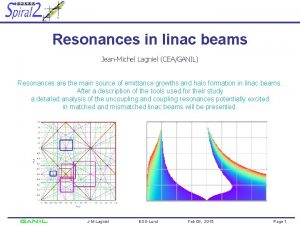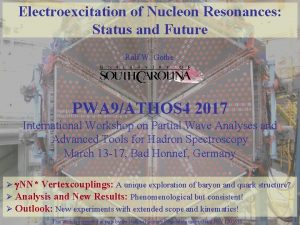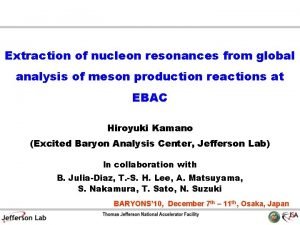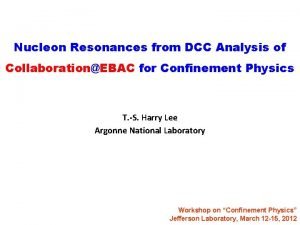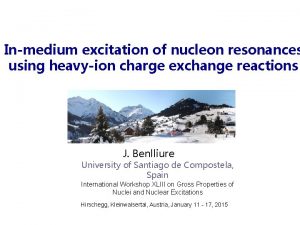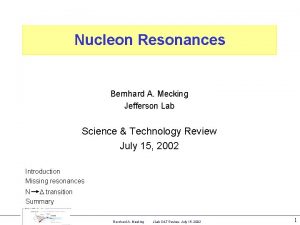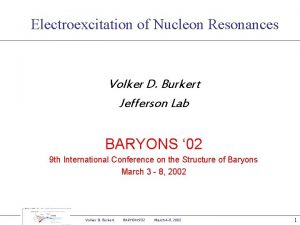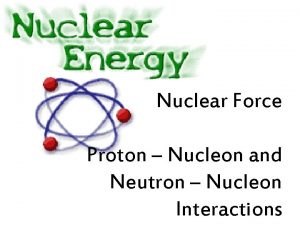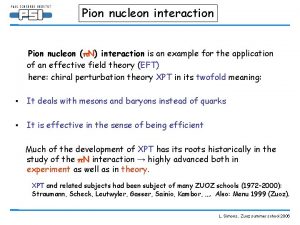Longitudinal and transverse helicity amplitudes of nucleon resonances
































- Slides: 32

Longitudinal and transverse helicity amplitudes of nucleon resonances in a constituent quark model - bare vs dressed resonance couplings • • • Introduction The hypercentral Constituent Quark Model Results for the longitudinal and transverse helicity amplitudes Bare vs dressed resonance couplings How to introduce dressing Conclusions M. Giannini BRAG Meeting, Bonn 4 september 2007 1

Many models have been built and applied to the description of hadron properties: Constituent Quark Models (CQM): quarks as effective # Isgur-Karl, Capstick Isgur, Rome degrees of freedom # algebric U(7) # hypercentral # applied to spectrum Goldstone Boson Exchange elastic ff # Instanton interaction transition ff Skyrmion Soliton models Chiral models Instanton models a systematic approach is more easily followed with CQMs 2

3

x = hyperradius 4

Quark-antiquark lattice potential G. S. Bali Phys. Rep. 343, 1 (2001) V = - b/r + c r 5

h. CQM & Electromagnetic properties • • Photocouplings Helicity amplitudes (transition f. f. ) Elastic form factors of the nucleon Structure functions Fixed parameters predictions 6

HELICITY AMPLITUDES Definition A 1/2 = < N* Jz = 1/2 | HTem | N Jz = -1/2 > * § A 3/2 = < N* Jz = 3/2 | HTem | N Jz = 1/2 > * § S 1/2 = < N* Jz = 1/2 | HLem | N Jz = 1/2 > * N, N* nucleon and resonance as 3 q states HTem Hlem model transition operator overall sign -> problem § results for the negative parity resonances: M. Aiello et al. J. Phys. G 24, 753 (1998) 7

Photoproduction amplitude Theory: states are defined up to a phase factor N -> N ei N* -> N* ei π N* N N <N*|H |N> the overall sign is left unchanged Phenomenology: Overall sign relative to Born amplitude N* N π N A 1/2 A 3/2 S 1/2 In order to extract the helicity amplitudes the sign of the strong vertex is used Need for : a definite way of extracting the photon vertex a general consensus 8

for a comparison with data: M. Aiello et al. , Phys. Lett. B 387, 215 (1996) 9

D 13 transverse helicity amplitudes (proton) D 13 helicity amplitudes (neutron) longitudinal helicity amplitudes (proton) DD 13 13 longitudinal helicity amplitudes (proton) 10

11

12

13

14

15

16

17

18

please note • the calculated proton radius is about 0. 5 fm (value previously obtained by fitting the helicity amplitudes) • the medium Q 2 behaviour is fairly well reproduced • there is lack of strength at low Q 2 (outer region) in the e. m. transitions specially for the A 3/2 amplitudes • emerging picture: quark core (0. 5 fm) plus (meson or sea-quark) cloud “On the other hand, the confinement radius of ≈ 0. 5 fm, which is currently used in order to give reasonable results for the photocouplings, is substantially lower than the proton charge radius and this seems to indicate that other mechanisms, such as pair production and sea quark contributions may be relevant. ” M. Aiello, M. Ferraris, M. M. G, M. Pizzo, E. Santopinto, Phys. Lett. B 387, 215 (1996). 19

Bare vs dressed quantities QM calculations • the aim is the description of observables not a fit (dressed quantities ) • with success: spectrum, magnetic moments, … • the separation between bare and dressed quantities is meaningful within a definite theoretical approach • CQ have a mass, some dressing is implicitly taken into account in fact CQs are effective degrees of freedom • something similar may occur in the spectrum e. g. the consistent inclusion of quark loops effects in the meson description does not alter the form of the qqbar potential but renormalizes the string constant (Geiger-Isgur) • a consistent and systematic CQM approach may be helpful in order to put in evidence explicit dressing effects 20

Various approaches with mesons and baryons af effective degrees of freedom Mainz-Dubna-Taiwan Sato & Lee ……… MAID -> 2007 e. g. MZ dynamical model a systematic description (fit with free parameters) is obtained with very good results 21

22

23

Explicit evaluation of the meson cloud contribution to the excitation of the nucleon resonances (Mainz Group and coworkers) 24

Explicit evaluation of the meson cloud contribution to the excitation of the nucleon resonances (Mainz Group and coworkers) = ~R t + R t v. B ~R t 25

GE-MZ coll. , EPJA 2004 (Trieste 2003) 26

GE-MZ coll. , EPJA 2004 (Trieste 2003) 27

GE-MZ coll. , EPJA 2004 (Trieste 2003) 28

How to introduce dressing hadronic approach: mesons and baryons (nucleon + resonances) (equations for amplitudes, coupled channel calculations, lagrangians, …. . hybrid models at the quark level inclusion of higher Fock components in the baryon state unquenching the quark model Geiger-Isgur Capstick, this meeting Santopinto-Bijker, Nstar 2007 29

30 hep-ph/0701227

Conclusions • Phenomenological problems – Sign of helicity amplitudes – PDG values (often average of quite different sets) – Need for more data • A comparison of systematic CQM results and data – understanding where meson cloud or (better) q-qbar effects are important (transition and elastic ff, structure functions, …. . ) – a good basis for including consistently these effects provided by (h)CQM 31

Conclusions (cont. ) • Theoretical problems – Relativity (not important for helicity amplitudes) – Consistent inclusion of quark-antiquark pair creation effects • Consequences of the inclusion of quark-antiquark pair creation effects: – – – – Shift of energy levels Non zero width of resonances Consistent evaluation of strong vertices Direct calculation of scattering amplitudes Direct calculation of scattering electroproduction ………. A substantial improvement in CQM calculations! 32
 Magnetic helicity
Magnetic helicity Compare and contrast transverse and longitudinal waves
Compare and contrast transverse and longitudinal waves Difference between transverse wave and longitudinal wave
Difference between transverse wave and longitudinal wave Transversely framed
Transversely framed Stealer plate in ship construction
Stealer plate in ship construction Medium of a wave
Medium of a wave Wavelength formula triangle
Wavelength formula triangle Amplitude articulaire poignet
Amplitude articulaire poignet Mechaniniai svyravimai ir bangos
Mechaniniai svyravimai ir bangos Light waves are electromagnetic waves true or false
Light waves are electromagnetic waves true or false Transverse vs longitudinal waves
Transverse vs longitudinal waves 4 lobes of the brain
4 lobes of the brain Whats a reflected sound wave
Whats a reflected sound wave Vertical
Vertical Omental bursa
Omental bursa Nucleon
Nucleon M atome = a x m nucleon
M atome = a x m nucleon Nucleon
Nucleon Name of symbol
Name of symbol Nucleon
Nucleon Nucleon
Nucleon Nucleon
Nucleon Longitudinal vs cross sectional
Longitudinal vs cross sectional Longitudinal research and cross sectional research
Longitudinal research and cross sectional research Eiloan
Eiloan Transverse axis and conjugate axis
Transverse axis and conjugate axis Fremitus lungs
Fremitus lungs Conjugate axis hyperbola
Conjugate axis hyperbola Transverse tubules and sarcoplasmic reticulum
Transverse tubules and sarcoplasmic reticulum Visceral pericardium
Visceral pericardium Longitudinal study qualitative or quantitative
Longitudinal study qualitative or quantitative Longitudinal research design example
Longitudinal research design example Keel surface aircraft
Keel surface aircraft
